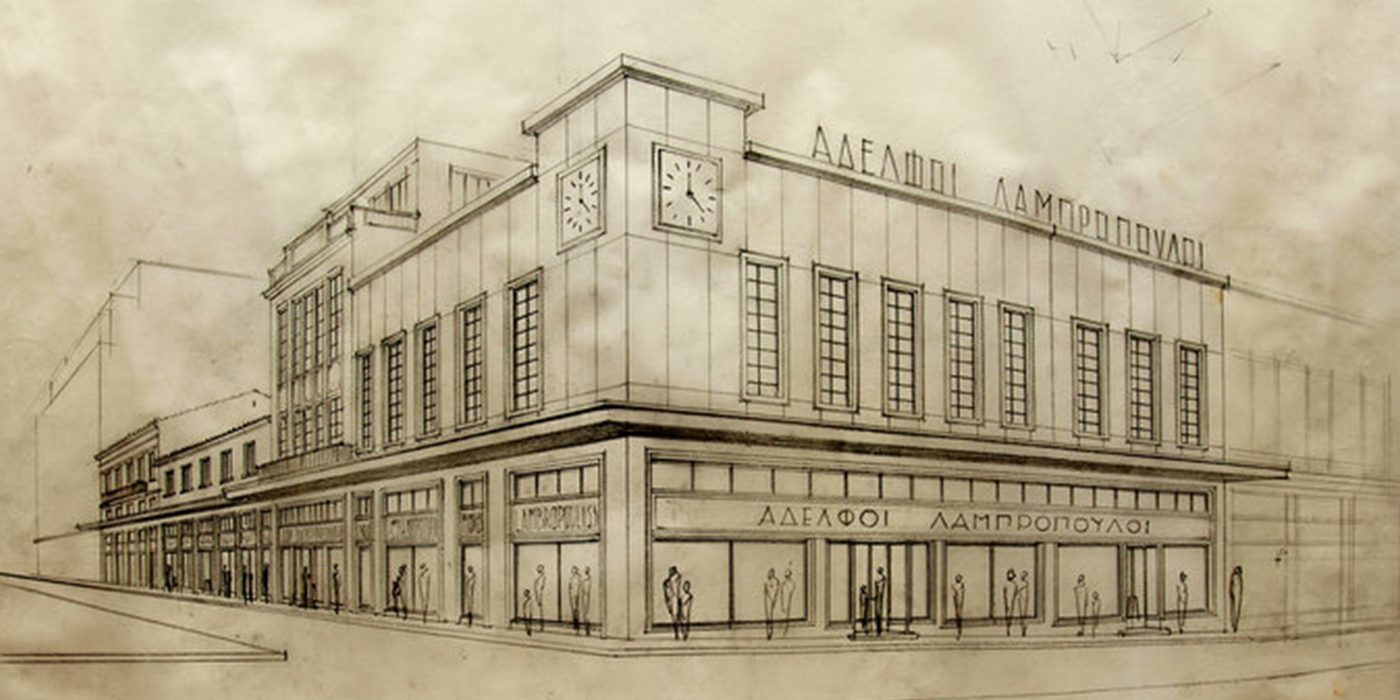
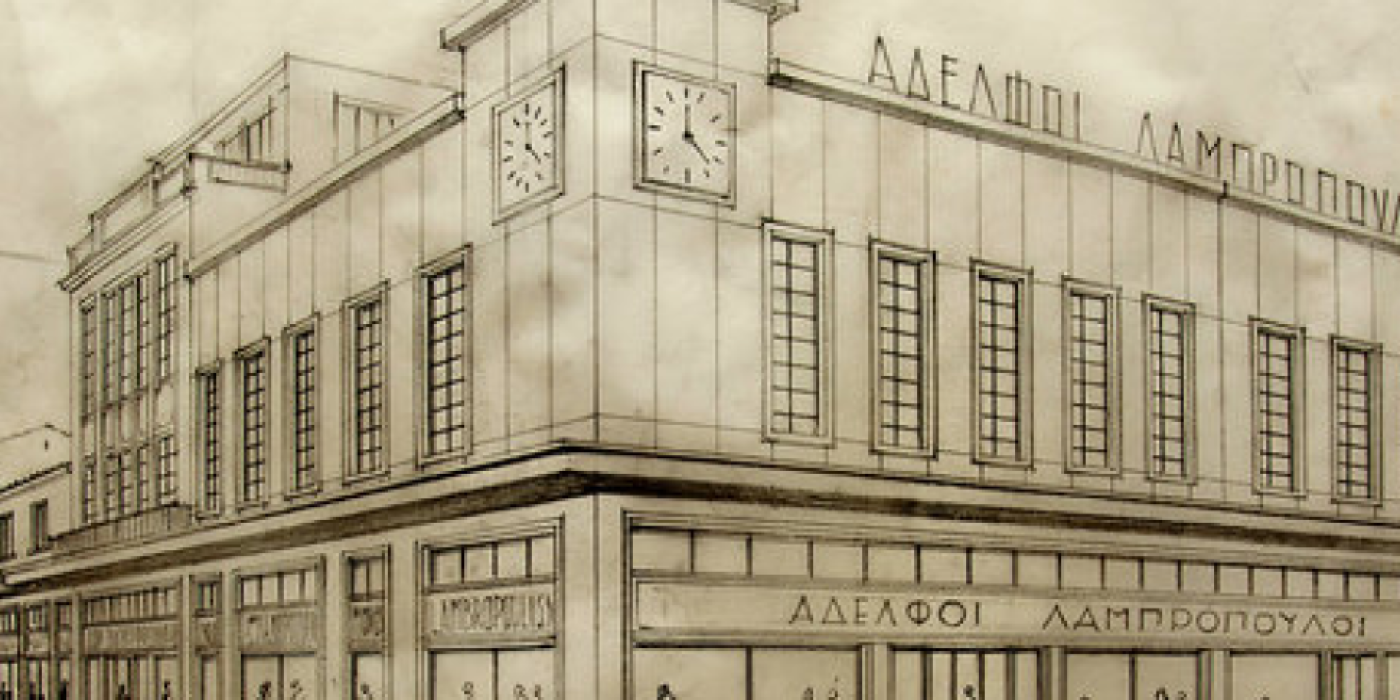
The philanthropic activities of the Lambropoulos family began in the 1950s with significant donations to vulnerable groups and support for financially disadvantaged citizens, primarily in Athens. This period of social contribution further strengthened the family’s commitment to solidarity and giving.
In 1978, with the founding of the Foundation, Dimitrios Lambropoulos and his wife, Lefkothea (Blanche), invested their wealth to create a timeless organization of solidarity. With the desire to make love for fellow human beings a lasting value, they established an organization that not only focuses on material support but also aims to improve the lives of the most vulnerable. Since then, the Foundation has been operating continuously and remains committed to its initial mission: providing assistance wherever there is need, empowering the weak, and supporting the fundamental values of mutual aid and social contribution.
Our family’s history in commerce began in 1898 when Xenophon Lambropoulos left his large family in Kontovazaina, Arcadia, and moved to Athens with the goal of finding his fortune and creating the conditions for a better future.
To cover his expenses, send necessities to his family, and save for future steps, he started as a street vendor in central Athens, specifically on Aiolou Street, in the Omonia area, which was the heart of the city at the time. With his small cart, attractive merchandise, and polite manners, he quickly became well-known and sought after. Soon, he gathered enough money to set up his first small but covered business.
His brother, Vasileios, soon followed him to Athens, aiming to finish high school and work for a living. The two brothers, who shared a common vision and values, decided to cooperate and established a commercial company in 1906, housing their business in a basement at the corner of Aiolou and Sofokleous Streets.
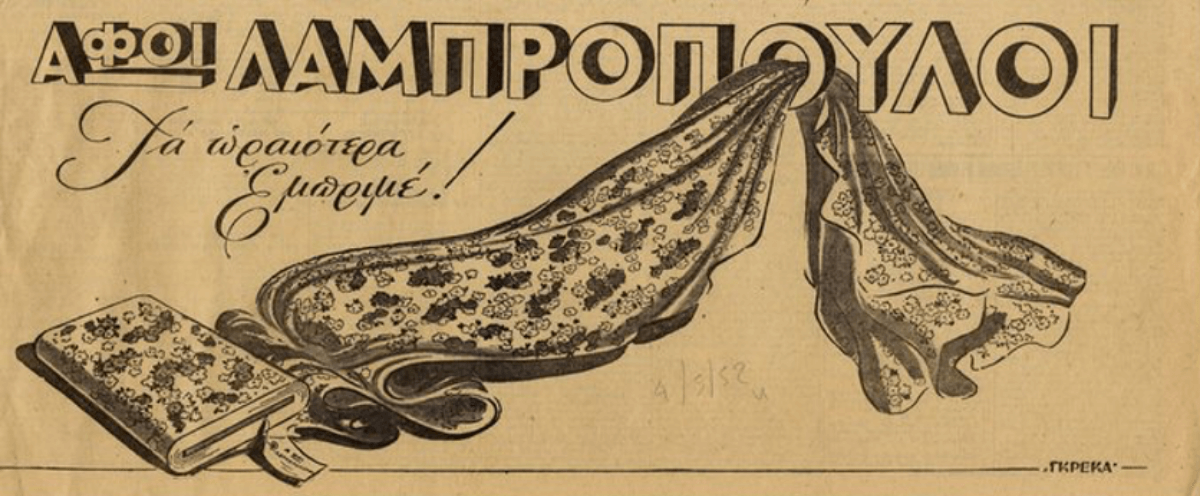

The philanthropic activities of the Lambropoulos family began in the 1950s with significant donations to vulnerable groups and support for financially disadvantaged citizens, primarily in Athens. This period of social contribution further strengthened the family’s commitment to solidarity and giving.
This story of the company and its subsequent upward trajectory, from the early 20th century and for decades thereafter, reaching its peak by first conquering the Athens market, is chronicled in the historical photobook “Lambropoulous Bros, 1901 – 1999: Choosing Before You – For You.”


The presentation of the photobook, which includes all the major historical milestones of the company in the past century, will take place on Wednesday, November 30th, at the Zappeion Megaron at 19:00, hosted by the Demetrios and Blanche Lambropoulos Foundation. The event will also feature a small exhibition of family documents related to the business activities of the Lambropoulos family, along with an interesting musical tribute showcasing hits from the Columbia record label, which was associated with the family.
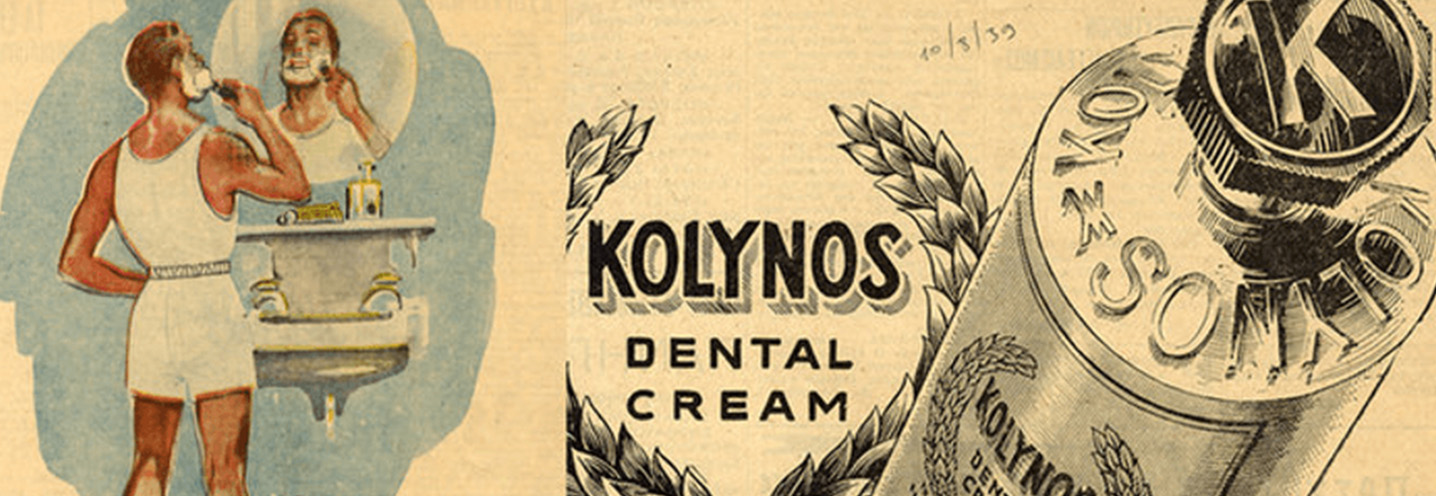

The first Lambropoulos store was a place where customers could find all men’s items as well as innovations of the time, such as ties, handkerchiefs, and shirts.
In addition to these innovations, the store developed a pioneering and innovative policy, recorded in the photobook, through texts accompanied by rich archival material. With three employees offering their services and working hours that lasted most of the day, from 07:00 AM to 10:00 PM, Lambropoulos made Sunday a holiday and abolished the marketplace philosophy, setting and announcing the prices of goods to ensure transparency and trust.
In 1913, the store was relocated to the building on Aeolou – Stadios Street, which over time expanded into the privately owned neoclassical buildings next to it, on Aeolou and Lycurgus Streets.
In 1927, the store “Afoi Lambropoulou” became a public limited company. Forty years later, it was listed on the stock exchange.


The war and the occupation did not affect the store, and they could not diminish its prestige.
In fact, on the eve of the war, the company made two significant business moves by acquiring the industrial trademark of the toothpaste “Kolynos” and the insecticide “Katol,” as well as the laboratories for the production of these products in Greece. “Kolynos,” known for its advertising slogan “highly effective… beautifies and whitens teeth,” became synonymous with the term toothpaste in the minds of consumers during its distribution by the company.


In advertisements from the 1950s, “Lambropoulos” appears ready to earn the trust of consumers and offer everything that the war and hardships had previously deprived them of.
Indeed, in 1951, the company celebrated fifty years of continuous operation with growth and remarkable progress.
The following years were even better, and the 1960s and ’70s were the peak decades of growth and evolution for the “Lambropoulos” company, which played a significant role in shaping the commercial center of the capital and became a landmark for all visitors to Athens.
Specifically, the corner of Aiolou with Lykourgou and Stadiou streets became synonymous with the store, a meeting point for everyone. People would simply say, “…at Lambropoulos,” ensuring that no one would get confused. The store became a magnet for consumers, especially children, during the festive seasons of Christmas and Carnival, and no one missed the sales.
Its windows attracted the admiration of Athenians, who would come to the city center to observe them and gain insight into fashion trends and what was popular in Europe.
“Profit in consumption” and “Certain prices” were not advertising slogans but rather the company’s way of gaining more and more trust from consumers by communicating its philosophy and values.
In 1979, the Lambropoulos brothers opened a new store in Piraeus.
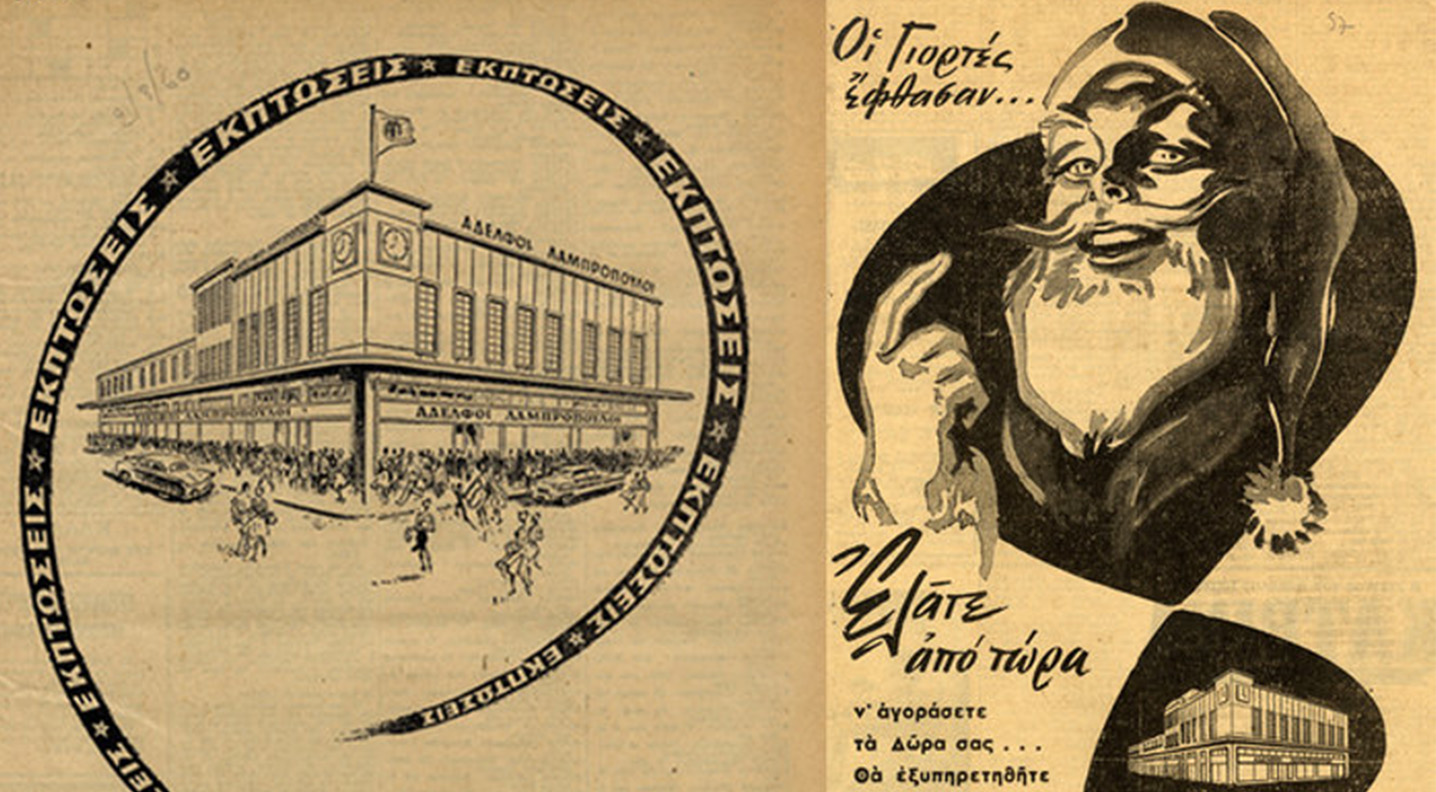

In the 1980s, Greeks from the provinces visiting Athens would seek out “Lambropoulos” because they knew they would find a wide variety of products whose prices matched their quality.
Lambropoulos’ store, along with Minion and Athinaia, managed to bring to Greece everything modern from the European market. Expensive fabrics, clothes from foreign designers, and products that were innovative yet of exceptional quality for the time surrounded the unforgettable slogan of the store:
“We Choose Before You, For You.”


In addition to the innovation of displaying prices on every item, which prevented haggling, the company “Lambropoulos” led the way in introducing Sunday as a day of rest, encouraging consumers to treat it as a festive day to wear their best clothes.
Another innovation was the introduction of gramophones by Vasilios Lambropoulos, as well as the introduction of records into the Greek market through a company he formed with Columbia.
At “Lambropoulos,” impressive fashion shows were held, and large events were organized with celebrity guests from TV shows aired by Greek television. In the 1990s, the reception of Ronn Moss, the famous Ridge Forrester from “The Bold and the Beautiful,” became iconic, drawing a crowd of 20,000 people!
In 1954, architect and professor at the National Technical University of Athens, Solon Kydoniatis, drafted a new proposal for the central Lambropoulos Bros store, following the Bauhaus principles. Em. Vourekas studied not only the floor layout but also the details of the interior space. Ultimately, this proposal was never fully realized.
However, the Lambropoulos family did not limit itself to commerce alone.
The creation of the record label “Columbia – Lambropoulos Bros” was another significant initiative. This endeavor began before the war, in a period marked by great difficulties, during which most of the population suffered.
Takis Vasileiou Lambropoulos was proven to be a brilliant mind in the music industry. He took over the company in 1958, at the age of 28, when the older generation of Lambropouloses handed over their businesses to their children. Takis succeeded his uncle, Themistocles Lambropoulos, and the visionary Nikandros Miliopoulos, the producer of all the legendary “sacred monsters” of the period from the ’30s to the ’60s, continuing their work and taking over the Columbia phonographic business.


Takis V. Lambropoulos advanced with a vision to elevate Columbia, aiming to revolutionize Greek music. He gathered poets and new musicians, including Theodorakis, Hatzidakis, Xarchakos, and others, and appointed Manolis Chiotis as the coordinator and director of recordings.
He discovered new voices such as Moscholiou, Angelopoulos, Dionysios, Lydia, Farandouri, and Xylouris, and brought actors into the music scene, including Voyiouklaki, Lambeti, Horn, and Melina Mercouri.
He also produced the “Karagiozis” album with Spatharis and simultaneously pioneered the first folk concerts at the Kentrikon.
Among other achievements, he reshaped the aesthetic of album covers, introducing the artistic cover, featuring works from prominent artists like Tsarouchis, Moralis, Eggonopoulos, Bost, and Argyriakis.
Moreover, he established or rather enforced the half-hour airplay for record companies on the radio and adopted the theme of “Synnefiasmeni Kyriaki” by Tsitsanis as the Columbia signature. He recorded theatrical performances, instituted the “first release” order for composers, preserving the prestige and grandeur of first performances, and ultimately revived the rebetiko genre with artists like Bithikotsis, P. Panos, Gavalas, and Lydia.
The history of the business, with its self-made patriarch from the Greek countryside who developed innovative actions in 20th-century Athens, demonstrates that when the economic urban framework provides opportunities that are seized by the right people, it creates the conditions for great success.
SOURCE for the activities of Takis V. Lambropoulos at Columbia, Website.
The photos used are from the ELIAS collection and the Haritatos archive.